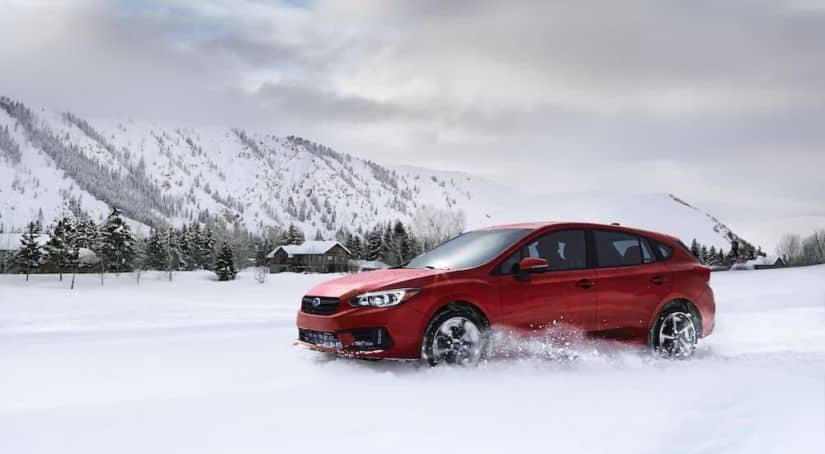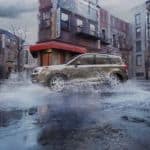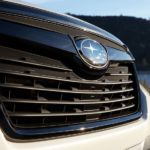There are many features to consider when buying a new car. Performance, efficiency, and style are undeniably important factors, but for many, safety often drives the decision-making process. While many auto manufacturers pride themselves on putting this at the forefront, a visit to the Subaru dealer near you will prove what many satisfied drivers already know: when it comes to safety, few can match the reputation of Subaru.
The Japanese auto manufacturer consistently ranks among the safest on the market, and this year is no different. Nine of Subaru’s 2021 models were named Top Safety Picks by the Insurance Institute for Highway Safety, which recognizes vehicles based on metrics including crashworthiness, crash avoidance, and mitigation. While industry recognition is great, it’s a different award that really illustrates consumer’s trust in the brand. Subaru has consistently been ranked as one of the top choices among parents with teen drivers, with the 2020 Impreza announced as one of Parents magazine as one of the top five cars for teen drivers.
Technological improvements continue to make cars safer than ever, with new features being introduced every year. The impact of these advances in both technology and design can’t be denied. Serious auto accidents per 100 million vehicle miles traveled have dropped by over 65 percent since the 1970s. From emerging features like crash warning systems and active braking technology to safety stalwarts such as air-bags and rollover protection, it can be a lot to keep up with. With that in mind, we’ve compiled this guide to help consumers stay on top of the latest in Subaru’s automotive safety technology.
Ahead of the Curve With AWD
Motorcyclists aside, most drivers would agree: four wheels are better than two. This is especially true when it comes to safety, where an extra two wheels gripping the road can mean the difference between a fender bender and a serious collision. As the first and only automaker to offer Symmetrical All-Wheel Drive (AWD) as a standard feature across their model lineup, Subaru has become synonymous with AWD technology.
First introduced by Subaru in the 1972 Leone, Symmetrical All-Wheel Drive now comes standard on every Subaru model except its rear-wheel drive BRZ sports coupe. This unique drivetrain approach has allowed Subaru to avoid two of the most common pitfalls of vehicle design: front-wheel drive vehicles have a tendency to understeer while turning, and rear-wheel drive can result in oversteer. The uniform power distribution inherent in AWD technology allows Subaru to improve traction and control on even the slipperiest roads.
While Subaru has been an industry leader in AWD, it hasn’t rested on its laurels. The manufacturer has continued to innovate and refine its system, and the numbers speak for themselves. Subaru earned four of the five top spots on CarMax’s 2021 Best AWD Cars list, with the Outback earning this year’s top honors. The Impreza sedan and hatchback rank number two, while the Legacy and Crosstrek scored the four and five spots, respectively.
AWD vs 4WD
But just what is AWD? Many drivers are familiar with four-wheel drive (4WD) found in many trucks and large SUVs, but it’s important to understand the differences between the two systems. The lines between AWD and 4WD are becoming increasingly blurred as auto manufacturers start integrating the best features of each mode into their vehicles, but there are some important distinctions. Both AWD and 4WD are capable of distributing drivetrain power to all four wheels of the car, but the difference comes in just how and when that is accomplished.
4WD systems are not designed to be used all the time, relying instead on the driver using their discretion to select 4WD mode manually when encountering extreme road conditions. In contrast, AWD is a true “set it and forget it” type of system that will automatically engage all four wheels when the vehicle requires improved traction in slippery conditions. The hands-off nature of AWD allows drivers means that you will never be caught by surprise in the wrong drive mode when road conditions suddenly change.
Subaru’s Symmetrical AWD system takes it one step further, powering all four wheels at all times to ensure confident, responsive handling. While you wouldn’t want to run a 4WD vehicle in 4WD mode at all times due to safety and mechanical concerns, Subaru’s AWD technology takes the worry out of the equation, continually monitoring conditions and striking the optimal balance between efficiency and safety.
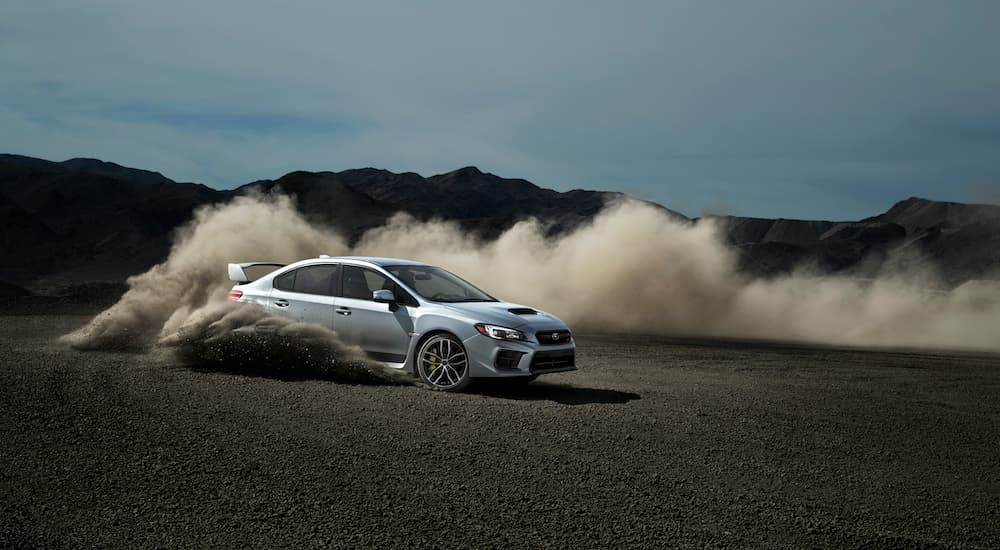
Subaru’s AWD Systems
There are some slight variations between the specific AWD systems offered by Subaru, but they break down into four categories:
Active Torque Split (ATS) – Found in nearly all Subaru models, this system divides torque 60/40 using a multi-plate center clutch. Unlike competing AWD systems that only engage when needed, this system always powers all four wheels.
Viscous Center Differential (VCD) – Used on Crosstrek, Impreza, and WRX models with manual transmissions, this is a purely mechanical system that uses a viscous coupling to distribute power. The 50/50 torque split and lack of computer intervention make it extremely predictable in all conditions.
Variable Torque Distribution (VTD) – This high-performance system is found only in the automatic WRX and uses a planetary center differential and electronic hydraulic transfer clutch. It also features a 45/55 torque split designed to reduce understeer during acceleration.
Driver Controlled Center Differential (DCCD) – This is Subaru’s ultimate high-performance AWD system and is only found on the WRX STI. It has a 41/59 split for improved acceleration and controlled oversteer in corners. Most importantly, it uses a mechanical center differential that can be manually locked by the driver and has limited-slip front and rear differentials. Together, these elements give the WRX STI better four-wheel grip than most 4WD trucks.
While we do our best to describe the technical differences between Subaru’s AWD systems, there’s no substitute for experiencing it firsthand. Visit your local Subaru dealer to test drive the various models and make your decision where it really counts: behind the wheel.
Keeping an Eye Out for Safety
No one likes a backseat driver, but it can never hurt to have another pair of eyes on the road. By leveraging advances in imaging technology, Subaru has managed to keep all the benefits of a co-pilot without the feeling of someone breathing down your neck.
Introduced in 2013, Subaru EyeSight Driver Assist Technology isn’t one specific feature; it’s a suite of integrated collision avoidance and driving assistance programs that impact nearly every part of the driving experience. Including everything from adaptive cruise control and throttle management to lane monitoring and collision detection, EyeSight uses a pair of color cameras that work just like human eyes to process visual data into actionable safety features. The benefits offered by EyeSight are particularly important in the age of distracted driving. The system works with the drivers to create a safer driving experience without feeling intrusive.
Say you’re running errands during your lunch hour, trailing another vehicle on a busy road, and looking to merge into the right lane. While you’re busy scanning the road to your right as you merge, the car in front of you stops suddenly for a pedestrian in a crosswalk. EyeSight monitors the fast-approaching rear bumper of the vehicle ahead of you, and two systems immediately kick into action: the Pre-Collision Throttle Management reduces power, while the forward collision warning system alerts you to the stopped vehicle in your path. In emergency situations, EyeSight may engage Pre-Collision Braking system, bringing the vehicle to a more abrupt stop.
Some of EyeSight’s other noteworthy features include Lane Keep Assist and Sway Warning and Lead Vehicle Start Alert, which notifies drivers when the vehicle in front of you has started moving. The system’s Adaptive Cruise Control allows for a seamless highway driving experience. Simply set the distance you want to maintain from the vehicle in front of you, and EyeSight will automatically adjust the throttle to keep you at a safe, consistent distance.
While it’s only been on the market for a couple of years, the numbers already speak for themselves. EyeSight has been shown to reduce injury-inducing rear-end collisions by up to 85%, and all Subaru models using the technology have earned the highest possible front-end crash prevention recognition from the IIHS.
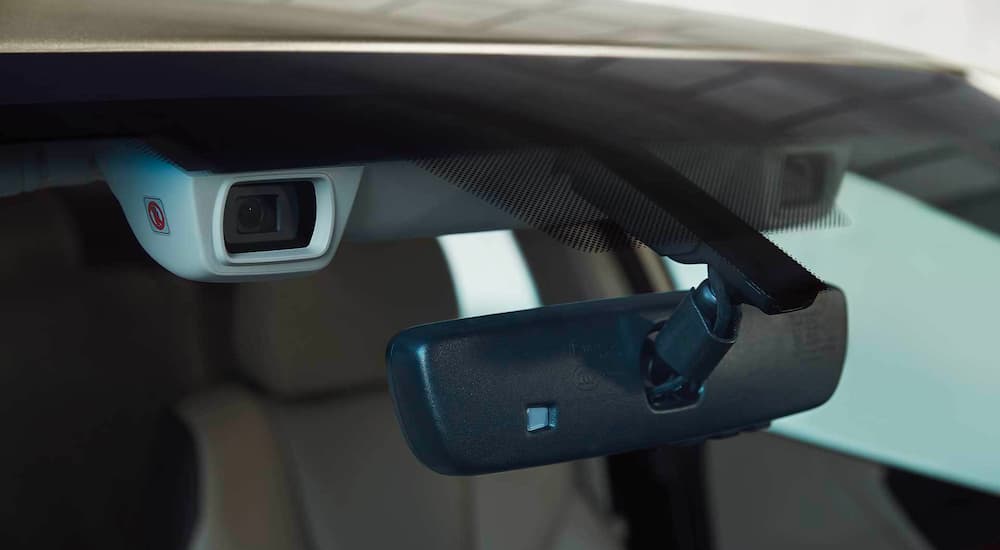
A Link to Safety and Information
In a time where we walk around with supercomputers in our pocket, it’s a little funny to think about just how old-fashioned our vehicles can be in comparison. Smartphones can be our workplace, shopping mall, and delivery service, but we’re all too content to let our cars get away with offering little more than a radio, thermometer, and – maybe – GPS.
Still, in-vehicle multimedia technology is becoming more prevalent all the time, and Subaru has not fallen behind. Starlink is a dash-mounted, hands-free console that includes two distinct systems: Starlink Safety and Security, and Starlink Multimedia. Featuring smartphone connectivity, navigation, and multimedia content, Starlink also serves an important role as an integrated safety system.
Starlink Safety and Security includes Automatic Collision Notifications, which connects drivers with a customer care advisor and alerts first responders if necessary. An SOS button allows drivers to manually contact customer care advisors, enabling faster roadside mechanical or medical assistance. When you start to delve into the maintenance and diagnostic features of the Starlink Safety and Security system, you’ll begin to wonder why you ever settled for the old-fashioned check engine light.
A monthly vehicle health report helps you keep tabs on the performance and efficiency of your Subaru, allowing drivers to head off costly repairs by staying informed about just what’s going on under the hood. Starlink offers a number of packages, with the Starlink Safety and Security Plus offering including remote lock/unlock, vehicle locator, and stolen vehicle recovery options.
On the entertainment and information end of things, Starlink Multimedia connects drivers to music, news, and weather and offers navigation assistance. The Starlink app allows your Starlink-equipped Subaru to become an extension of your smartphone, using cellular data to connect drivers to their favorite podcasts, music streaming, and navigation apps. Many of these features can be managed hands-free with voice commands or easily navigated via Starlink’s high-resolution touchscreen.
Starlink Multimedia is provided standard on all Subaru models, and a free one-year Starlink Safety Plus subscription is included with all new or certified pre-owned Starlink-equipped Subarus. Starlink Security Plus, which includes stolen vehicle recovery, security notifications, and remote vehicle locator, runs $49 for the first year and $149 each following year.
Find Safety At Your Subaru Dealer
Safety might not be the most glamorous aspect of your car-buying process, but it could well end up being the most important. With a broad range of safety features and more innovations in the works, Subaru buyers can rest assured that the safety end of things is well covered. This not only offers a sense of security but also allows you to spend more time agonizing over which color to get.
A trip to your local Subaru dealer will give you a chance to experience Symmetrical AWD, EyeSight, Starlink, and more. Take a spin around the block and feel the performance benefits of AWD, sit back and let EyeSight worry about your blind spot, or hook up your smartphone to the Starlink system and force everyone in the dealership to listen to your driving playlist. No matter what, know that driving will be safer with Subaru’s full suite of standard features than ever.
